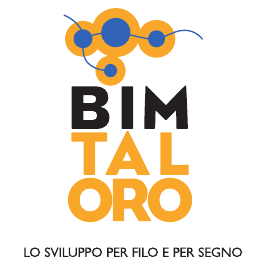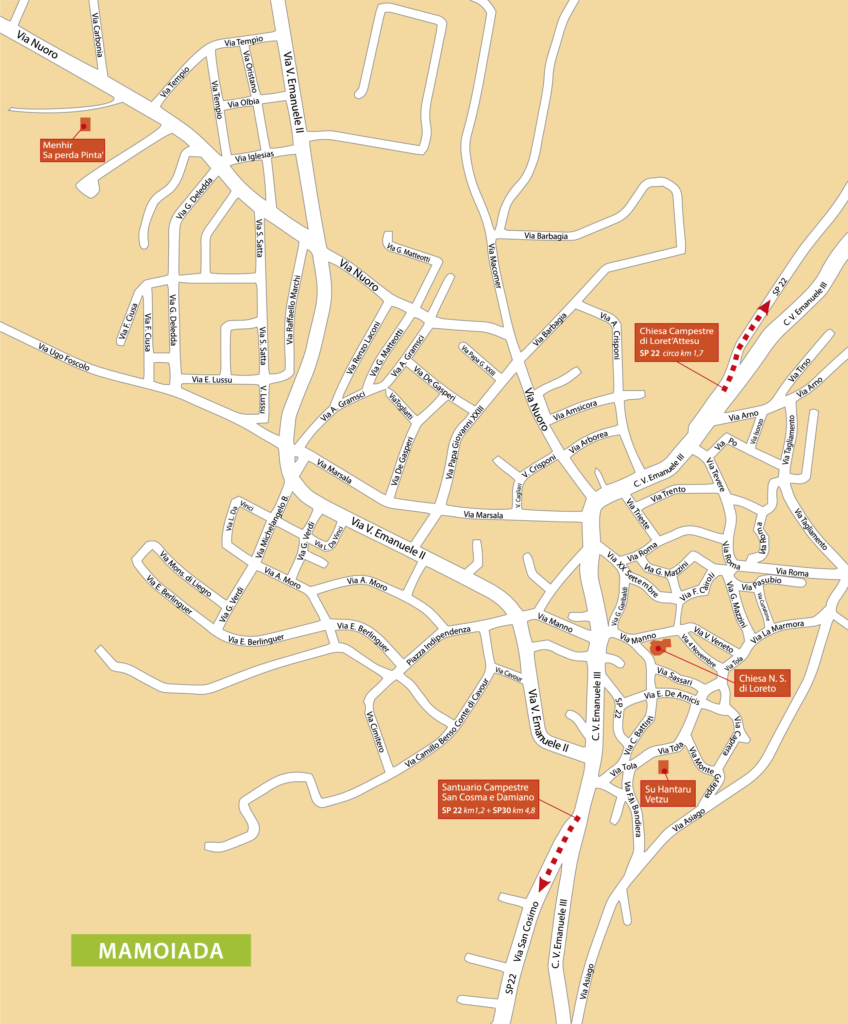Church of Nostra Signora di Loreto
Located in the heart of the town of Mamoiada, the Church of Nostra Signora di Loreto towers above the surrounding two- and three-storey buildings. Even though the current building dates back to the early 17th century, the church itself is possibly medieval in origin. The church has a circular ground plan and is topped by a hexagonal dome and a roof lantern resting on a hexagonal drum. The windows and oculi piercing the drum provide the only source of natural light. Outside, the church has a pleasing simplicity – plain plastered walls and, above the main entrance, a stained-glass rose window (where originally there was an arched window) featuring an eight-point star inside a trachyte ring. The same star design may be found on the floor of the triangular square outside the church entrance. Inside, there are five shallow niches, all rectangular in plan, separated by protruding pillars (which support the drum) and by the apse, where the marble altar facing south-east is located.
The church sits next to the sacristy, which is thought to be the original place of worship. In its architectural simplicity (a cylinder and a hexagonal prism topped by a dome), the church is reminiscent of ancient baptisteries, Bramante’s and Raphael’s central-plan buildings, and Neoclassical ‘rotundas’. It is not unlikely, due to its proximity to the village of Fonni, that the church was designed and built by the same craftsmen who worked on the Church of Santa Maria dei Martiri and the oratory of San Michele.
Over the years, the Church of Nostra Signora di Loreto has undergone several changes and improvements, both on the outside (today there is no trace of the old pavement, railings and pillars that enclosed the square where the feast day of Saint Isidore was celebrated, nor is there any trace of the plaque commemorating the fallen of World War I and II) and inside (in the 1950s, most of the plasterwork was removed, along with the stucco sculptures placed on the pillars, to avoid any unnecessary distraction). Following a thorough investigation into the church’s history, renovation works have been carried out on the square (1997), on the sacristy and its flooring (2006-2007), and on the wall paintings of the apse (2010-2011), which had been damaged by rising damp and water penetration. The tempera paintings dating back to the late 19th century – Our Lady of Loreto and the Holy House by Emanuele Carboni – were removed to reveal the frescoes hidden underneath, depicting religious themes as well as coats of arms and motifs, painted by Pietro Antonio Nonnis and Pietro Antonio Are in the early 18th century (1723). Particularly noteworthy is the coat of arms of the Lopez de Zuniga family, Dukes of Mandas, which was identified by scholar and medieval expert Umberto Oppus: as of today, this coat of arms is the only trace left of this family in Sardinia. Last but not least, the vault is currently being rebuilt after its collapse in 2018.
The Church of Nostra Signora di Loreto was consecrated by Alberto Maria Solinas Nurra, a Carmelite priest, on 9 September 1804, as confirmed by the plaque near the altar. Every year on December 10, the church celebrates the feast of Our Lady of Loreto. Whilst it remains available for ceremonies, it can only be visited with the Mamoiada parish priest’s permission.
Text by Cecilia Mariani
 BIM TALORO
BIM TALORO 